Jiahua Xu
LiDARDustX: A LiDAR Dataset for Dusty Unstructured Road Environments
May 28, 2025Abstract:Autonomous driving datasets are essential for validating the progress of intelligent vehicle algorithms, which include localization, perception, and prediction. However, existing datasets are predominantly focused on structured urban environments, which limits the exploration of unstructured and specialized scenarios, particularly those characterized by significant dust levels. This paper introduces the LiDARDustX dataset, which is specifically designed for perception tasks under high-dust conditions, such as those encountered in mining areas. The LiDARDustX dataset consists of 30,000 LiDAR frames captured by six different LiDAR sensors, each accompanied by 3D bounding box annotations and point cloud semantic segmentation. Notably, over 80% of the dataset comprises dust-affected scenes. By utilizing this dataset, we have established a benchmark for evaluating the performance of state-of-the-art 3D detection and segmentation algorithms. Additionally, we have analyzed the impact of dust on perception accuracy and delved into the causes of these effects. The data and further information can be accessed at: https://github.com/vincentweikey/LiDARDustX.
Structure-Accurate Medical Image Translation based on Dynamic Frequency Balance and Knowledge Guidance
Apr 13, 2025



Abstract:Multimodal medical images play a crucial role in the precise and comprehensive clinical diagnosis. Diffusion model is a powerful strategy to synthesize the required medical images. However, existing approaches still suffer from the problem of anatomical structure distortion due to the overfitting of high-frequency information and the weakening of low-frequency information. Thus, we propose a novel method based on dynamic frequency balance and knowledge guidance. Specifically, we first extract the low-frequency and high-frequency components by decomposing the critical features of the model using wavelet transform. Then, a dynamic frequency balance module is designed to adaptively adjust frequency for enhancing global low-frequency features and effective high-frequency details as well as suppressing high-frequency noise. To further overcome the challenges posed by the large differences between different medical modalities, we construct a knowledge-guided mechanism that fuses the prior clinical knowledge from a visual language model with visual features, to facilitate the generation of accurate anatomical structures. Experimental evaluations on multiple datasets show the proposed method achieves significant improvements in qualitative and quantitative assessments, verifying its effectiveness and superiority.
\textsc{Perseus}: Tracing the Masterminds Behind Cryptocurrency Pump-and-Dump Schemes
Mar 03, 2025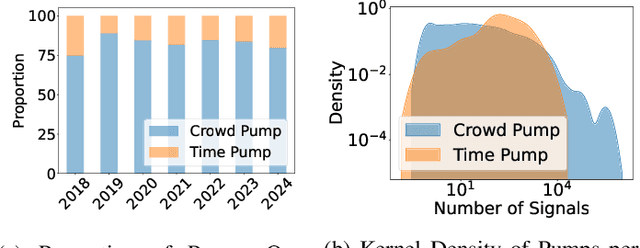
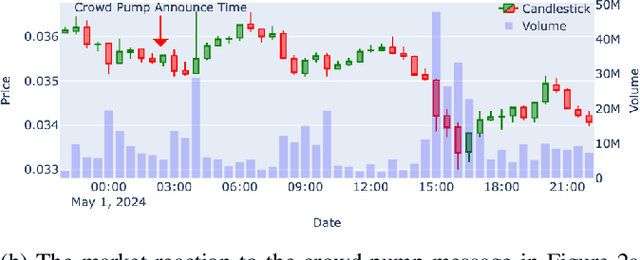
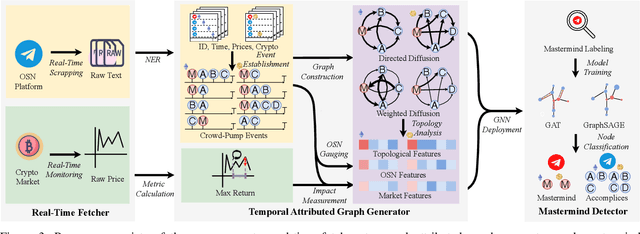
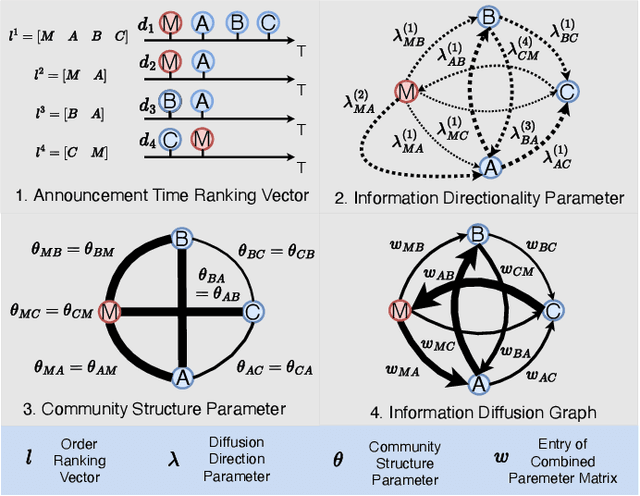
Abstract:Masterminds are entities organizing, coordinating, and orchestrating cryptocurrency pump-and-dump schemes, a form of trade-based manipulation undermining market integrity and causing financial losses for unwitting investors. Previous research detects pump-and-dump activities in the market, predicts the target cryptocurrency, and examines investors and \ac{osn} entities. However, these solutions do not address the root cause of the problem. There is a critical gap in identifying and tracing the masterminds involved in these schemes. In this research, we develop a detection system \textsc{Perseus}, which collects real-time data from the \acs{osn} and cryptocurrency markets. \textsc{Perseus} then constructs temporal attributed graphs that preserve the direction of information diffusion and the structure of the community while leveraging \ac{gnn} to identify the masterminds behind pump-and-dump activities. Our design of \textsc{Perseus} leads to higher F1 scores and precision than the \ac{sota} fraud detection method, achieving fast training and inferring speeds. Deployed in the real world from February 16 to October 9 2024, \textsc{Perseus} successfully detects $438$ masterminds who are efficient in the pump-and-dump information diffusion networks. \textsc{Perseus} provides regulators with an explanation of the risks of masterminds and oversight capabilities to mitigate the pump-and-dump schemes of cryptocurrency.
LLM-Powered Multi-Agent System for Automated Crypto Portfolio Management
Jan 07, 2025



Abstract:Cryptocurrency investment is inherently difficult due to its shorter history compared to traditional assets, the need to integrate vast amounts of data from various modalities, and the requirement for complex reasoning. While deep learning approaches have been applied to address these challenges, their black-box nature raises concerns about trust and explainability. Recently, large language models (LLMs) have shown promise in financial applications due to their ability to understand multi-modal data and generate explainable decisions. However, single LLM faces limitations in complex, comprehensive tasks such as asset investment. These limitations are even more pronounced in cryptocurrency investment, where LLMs have less domain-specific knowledge in their training corpora. To overcome these challenges, we propose an explainable, multi-modal, multi-agent framework for cryptocurrency investment. Our framework uses specialized agents that collaborate within and across teams to handle subtasks such as data analysis, literature integration, and investment decision-making for the top 30 cryptocurrencies by market capitalization. The expert training module fine-tunes agents using multi-modal historical data and professional investment literature, while the multi-agent investment module employs real-time data to make informed cryptocurrency investment decisions. Unique intrateam and interteam collaboration mechanisms enhance prediction accuracy by adjusting final predictions based on confidence levels within agent teams and facilitating information sharing between teams. Empirical evaluation using data from November 2023 to September 2024 demonstrates that our framework outperforms single-agent models and market benchmarks in classification, asset pricing, portfolio, and explainability performance.
Motion Artifact Removal in Pixel-Frequency Domain via Alternate Masks and Diffusion Model
Dec 10, 2024Abstract:Motion artifacts present in magnetic resonance imaging (MRI) can seriously interfere with clinical diagnosis. Removing motion artifacts is a straightforward solution and has been extensively studied. However, paired data are still heavily relied on in recent works and the perturbations in \textit{k}-space (frequency domain) are not well considered, which limits their applications in the clinical field. To address these issues, we propose a novel unsupervised purification method which leverages pixel-frequency information of noisy MRI images to guide a pre-trained diffusion model to recover clean MRI images. Specifically, considering that motion artifacts are mainly concentrated in high-frequency components in \textit{k}-space, we utilize the low-frequency components as the guide to ensure correct tissue textures. Additionally, given that high-frequency and pixel information are helpful for recovering shape and detail textures, we design alternate complementary masks to simultaneously destroy the artifact structure and exploit useful information. Quantitative experiments are performed on datasets from different tissues and show that our method achieves superior performance on several metrics. Qualitative evaluations with radiologists also show that our method provides better clinical feedback. Our code is available at https://github.com/medcx/PFAD.
LiSD: An Efficient Multi-Task Learning Framework for LiDAR Segmentation and Detection
Jun 12, 2024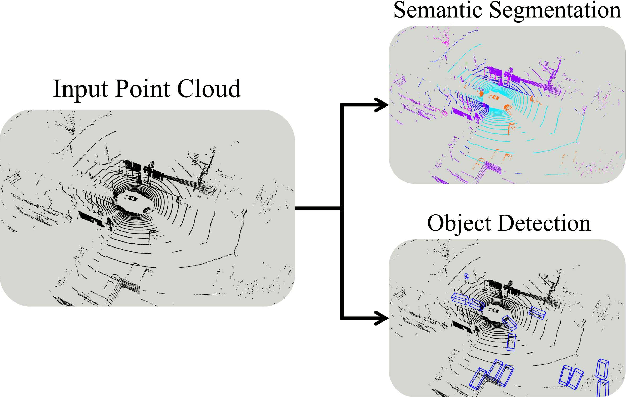

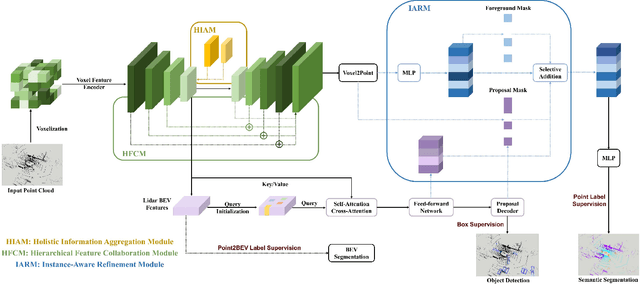
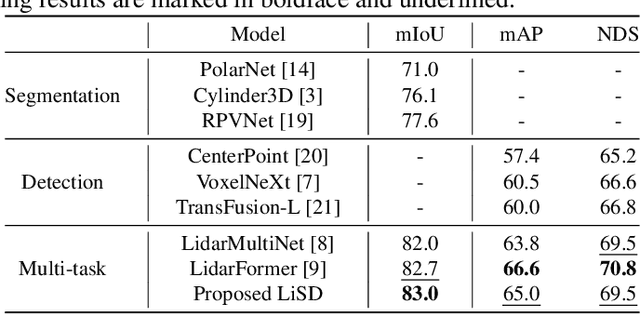
Abstract:With the rapid proliferation of autonomous driving, there has been a heightened focus on the research of lidar-based 3D semantic segmentation and object detection methodologies, aiming to ensure the safety of traffic participants. In recent decades, learning-based approaches have emerged, demonstrating remarkable performance gains in comparison to conventional algorithms. However, the segmentation and detection tasks have traditionally been examined in isolation to achieve the best precision. To this end, we propose an efficient multi-task learning framework named LiSD which can address both segmentation and detection tasks, aiming to optimize the overall performance. Our proposed LiSD is a voxel-based encoder-decoder framework that contains a hierarchical feature collaboration module and a holistic information aggregation module. Different integration methods are adopted to keep sparsity in segmentation while densifying features for query initialization in detection. Besides, cross-task information is utilized in an instance-aware refinement module to obtain more accurate predictions. Experimental results on the nuScenes dataset and Waymo Open Dataset demonstrate the effectiveness of our proposed model. It is worth noting that LiSD achieves the state-of-the-art performance of 83.3% mIoU on the nuScenes segmentation benchmark for lidar-only methods.
Evolution of ESG-focused DLT Research: An NLP Analysis of the Literature
Aug 23, 2023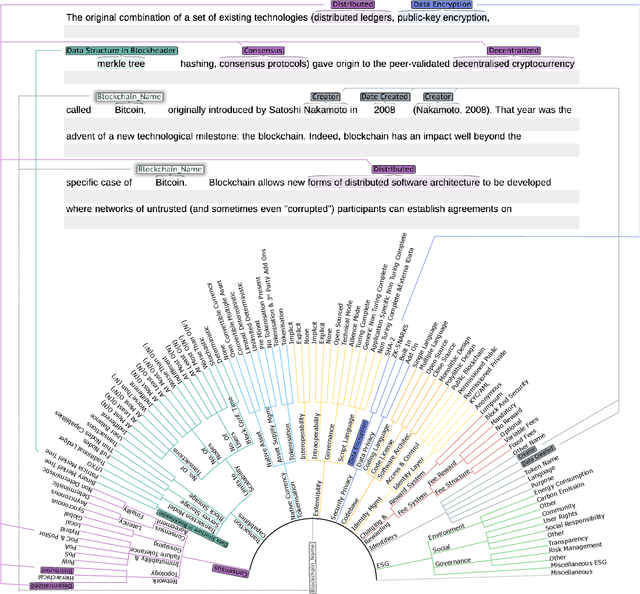
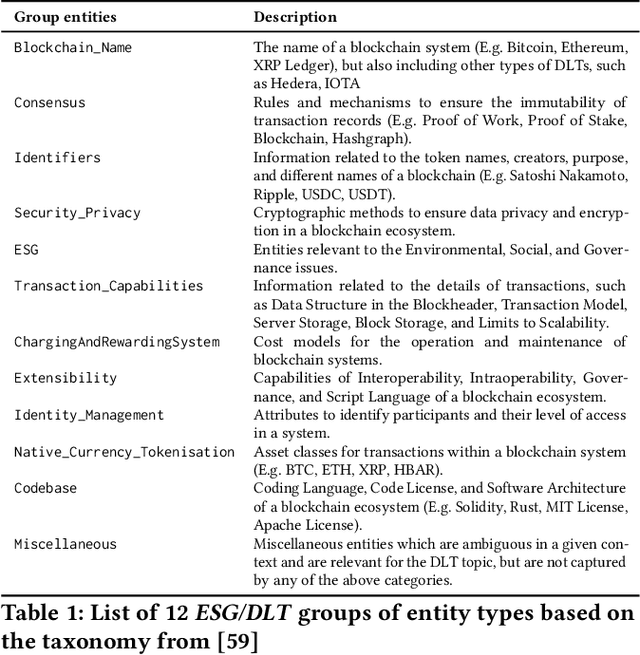
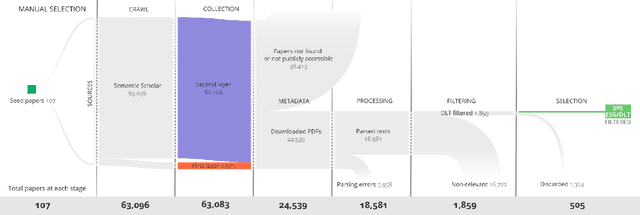
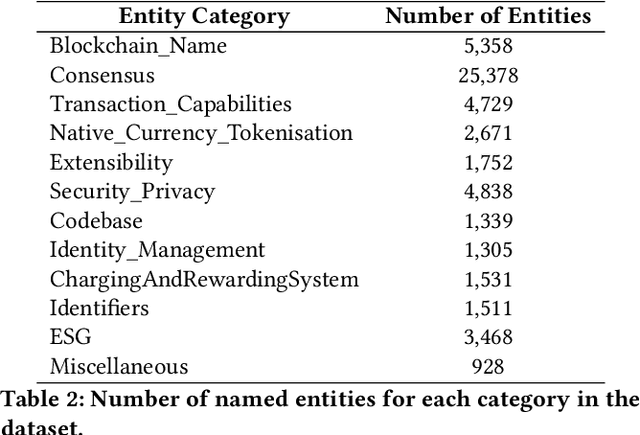
Abstract:Distributed Ledger Technologies (DLTs) have rapidly evolved, necessitating comprehensive insights into their diverse components. However, a systematic literature review that emphasizes the Environmental, Sustainability, and Governance (ESG) components of DLT remains lacking. To bridge this gap, we selected 107 seed papers to build a citation network of 63,083 references and refined it to a corpus of 24,539 publications for analysis. Then, we labeled the named entities in 46 papers according to twelve top-level categories derived from an established technology taxonomy and enhanced the taxonomy by pinpointing DLT's ESG elements. Leveraging transformer-based language models, we fine-tuned a pre-trained language model for a Named Entity Recognition (NER) task using our labeled dataset. We used our fine-tuned language model to distill the corpus to 505 key papers, facilitating a literature review via named entities and temporal graph analysis on DLT evolution in the context of ESG. Our contributions are a methodology to conduct a machine learning-driven systematic literature review in the DLT field, placing a special emphasis on ESG aspects. Furthermore, we present a first-of-its-kind NER dataset, composed of 54,808 named entities, designed for DLT and ESG-related explorations.
Auto.gov: Learning-based On-chain Governance for Decentralized Finance
Feb 19, 2023Abstract:Decentralized finance (DeFi) has seen a tremendous increase in interest in the past years with many types of protocols, such as lending protocols or automated market-makers (AMMs) These protocols are typically controlled using off-chain governance, where token holders can vote to modify different parameters of the protocol. Up till now, however, choosing these parameters has been a manual process, typically done by the core team behind the protocol. In this work, we model a DeFi environment and propose a semi-automatic parameter adjustment approach with deep Q-network (DQN) reinforcement learning. Our system automatically generates intuitive governance proposals to adjust these parameters with data-driven justifications. Our evaluation results demonstrate that a learning-based on-chain governance procedure is more reactive, objective, and efficient than the existing manual approach.
Dual Skip Connections Minimize the False Positive Rate of Lung Nodule Detection in CT images
Oct 25, 2021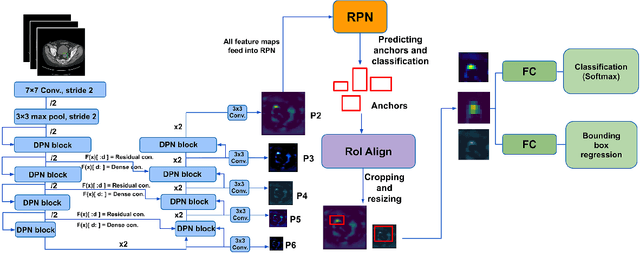
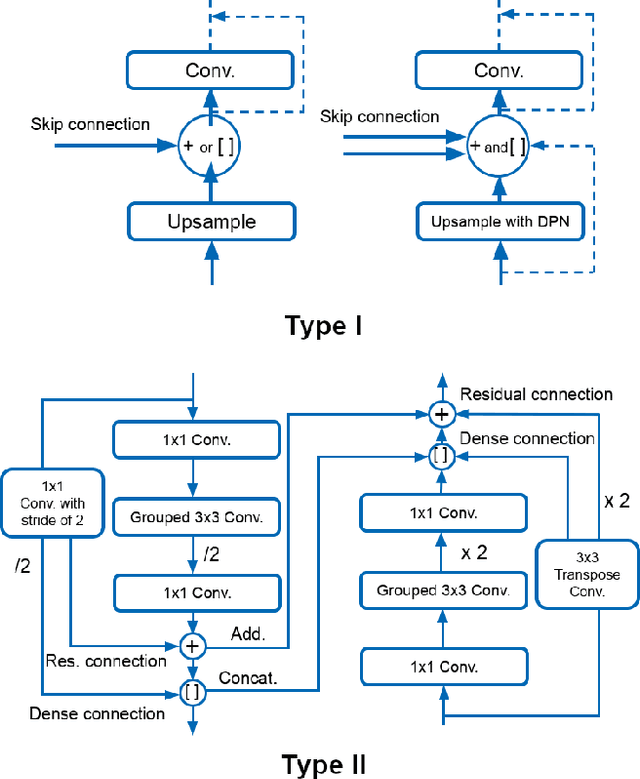
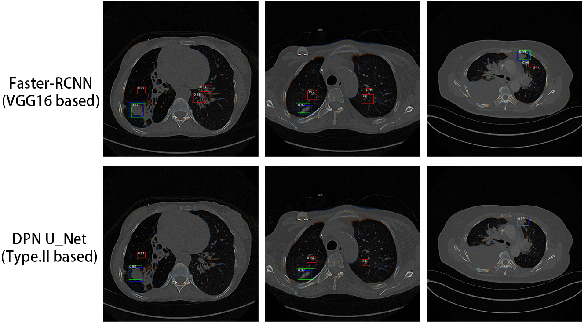

Abstract:Pulmonary cancer is one of the most commonly diagnosed and fatal cancers and is often diagnosed by incidental findings on computed tomography. Automated pulmonary nodule detection is an essential part of computer-aided diagnosis, which is still facing great challenges and difficulties to quickly and accurately locate the exact nodules' positions. This paper proposes a dual skip connection upsampling strategy based on Dual Path network in a U-Net structure generating multiscale feature maps, which aims to minimize the ratio of false positives and maximize the sensitivity for lesion detection of nodules. The results show that our new upsampling strategy improves the performance by having 85.3% sensitivity at 4 FROC per image compared to 84.2% for the regular upsampling strategy or 81.2% for VGG16-based Faster-R-CNN.
Adaptive Hypergraph Convolutional Network for No-Reference 360-degree Image Quality Assessment
May 19, 2021
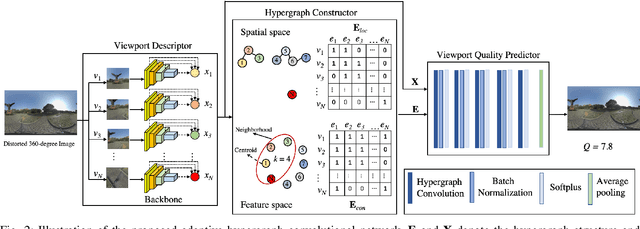
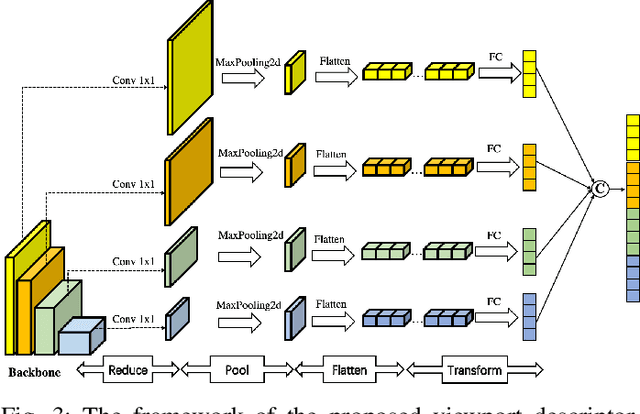
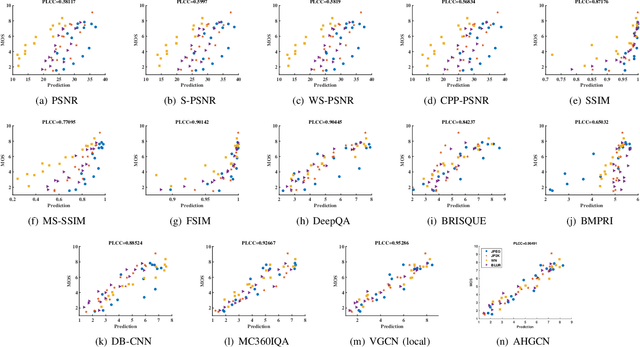
Abstract:In no-reference 360-degree image quality assessment (NR 360IQA), graph convolutional networks (GCNs), which model interactions between viewports through graphs, have achieved impressive performance. However, prevailing GCN-based NR 360IQA methods suffer from three main limitations. First, they only use high-level features of the distorted image to regress the quality score, while the human visual system (HVS) scores the image based on hierarchical features. Second, they simplify complex high-order interactions between viewports in a pairwise fashion through graphs. Third, in the graph construction, they only consider spatial locations of viewports, ignoring its content characteristics. Accordingly, to address these issues, we propose an adaptive hypergraph convolutional network for NR 360IQA, denoted as AHGCN. Specifically, we first design a multi-level viewport descriptor for extracting hierarchical representations from viewports. Then, we model interactions between viewports through hypergraphs, where each hyperedge connects two or more viewports. In the hypergraph construction, we build a location-based hyperedge and a content-based hyperedge for each viewport. Experimental results on two public 360IQA databases demonstrate that our proposed approach has a clear advantage over state-of-the-art full-reference and no-reference IQA models.
 Add to Chrome
Add to Chrome Add to Firefox
Add to Firefox Add to Edge
Add to Edge